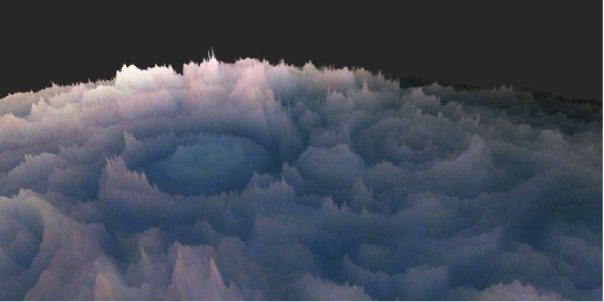New 3D renders created by a team of amateur scientists from Juno data show the “frosted cupcake” clouds of Jupiter in all their glory. As pretty as they may appear, however, you certainly don’t want to get caught up in this astronomically powerful storm.
The stunning results were presented by a team of citizen scientists at the Europlanet Science Congress 2022 in Granada this week.
The images were created by data from JunoCam, the visible-light camera onboard NASA’s Juno spacecraft. Juno has been orbiting the gas giant since 2016 and this batch of data was collected during its 43rd close flyby.
The JunoCam was initially put on Juno for the prime purpose of simply taking gorgeous images of Jupiter to capture the attention of the public. While it’s undoubtedly succeeded with the task, it’s also managed to produce some work of real scientific value.
“The Juno mission provides us with an opportunity to observe Jupiter in a way which is essentially inaccessible by Earth-based telescopic observations. We can look at the same cloud features from very different angles within only a few minutes,” Dr Gerald Eichstädt, a mathematician and software Developer who worked on the project, said in a statement.
“This has opened up a new opportunity to derive 3D elevation models of Jupiter’s cloud-tops. The images of the wonderful chaotic storms on Jupiter seem to come to life, showing clouds rising at different altitudes.”
Images of Jupiter’s swirling storm clouds often make the planet look like smooth marble. However, these images show that the violent clouds actually feature peaks and troughs like a rugged mountain range. Sunlight is most intense for clouds in the upper atmosphere, but it becomes increasingly absorbed as it reaches deeper into the atmosphere.

Another shot of the 3D render of Jupiter’s clouds. Image credit: NASA / JPL-Caltech / SwRI / MSSS / Gerald Eichstädt
“From theoretical models, the clouds are expected to be composed of different chemical species, ammonia, ammonium hydrosulphide, and water ice from top to bottom,” explained Dr Eichstädt. “Once we calibrate our data thanks to other measurements of the same cloud tops, we will test and refine the theoretical predictions and have a better 3D picture of the chemical composition.”
With a radius of 69,911 kilometers ( 43,440.7 miles), Jupiter is 11 times wider than Earth. It’s the largest planet in our Solar System by a long shot – and its clouds are equally gigantic.
Previous work by Juno has revealed that some of these clouds extend some 3,000 kilometers (1,900 miles) into the planet. That’s longer than the distance between the southern and northern borders of the US.
The planet’s iconic Great Red Spot – the largest storm in the Solar System – is also of gargantuan proportions, reaching a depth of up to 500 kilometers (310 miles) and spanning 6,000 kilometers (almost 10,000 miles) in diameter.
Source Link: “Frosted Cupcake” Clouds Caught Dancing On Jupiter